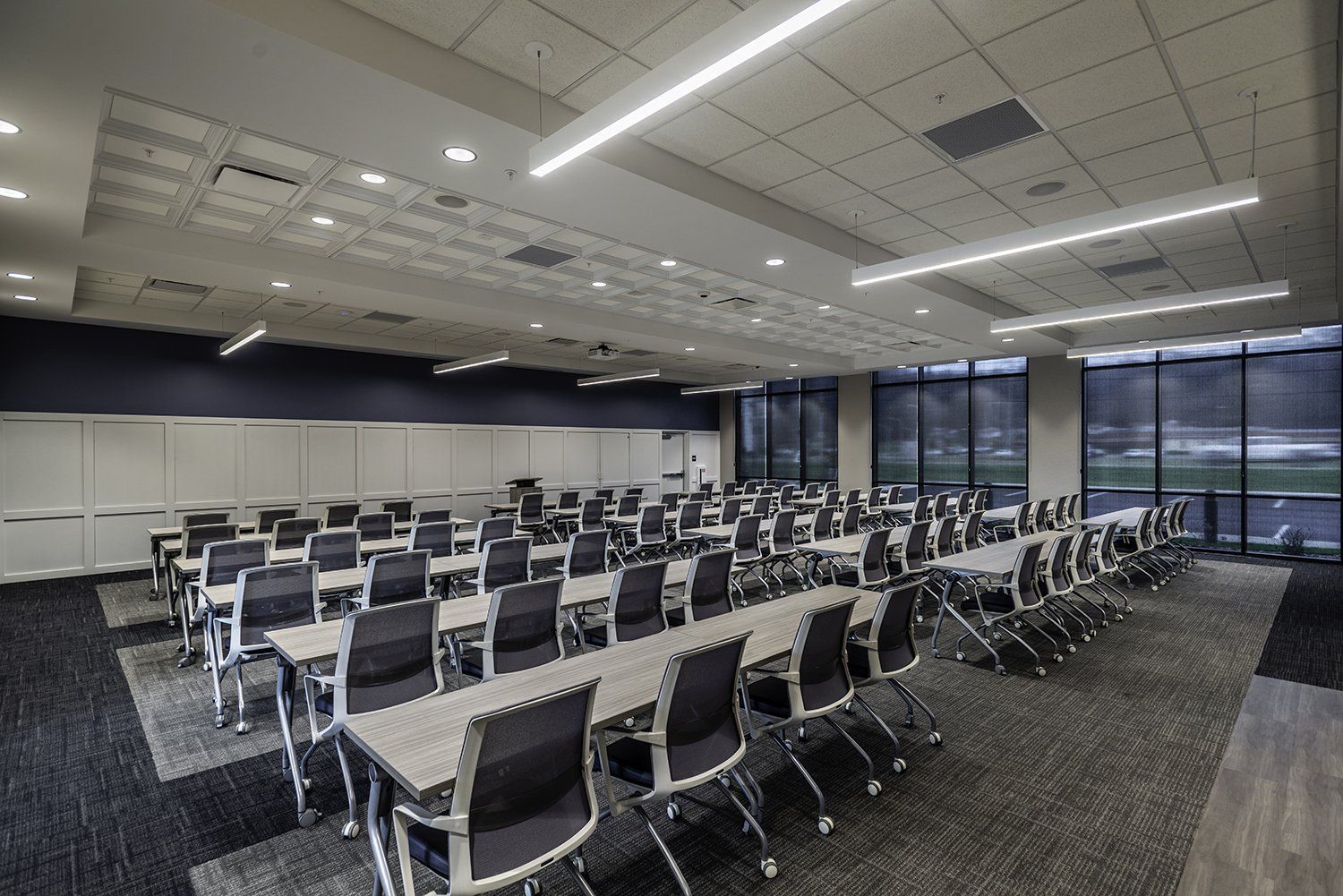By: Jeff Klump,
President of the K4 Family of Companies
Menu
Follow us on:

Artificial Intelligence (AI) is transforming the financial sector by enhancing cost management, customer experience, and operational performance. For community bank leaders, leveraging AI-generated data in branch design is essential for staying competitive in an increasingly digital industry. While AI does not replace architectural expertise, it provides valuable insights into foot traffic, customer behavior, and operational efficiency, allowing architects to make data-driven decisions that shape modern bank branches.
AI is revolutionizing architecture by offering data-driven intelligence that optimizes branch functionality, layout efficiency, and customer engagement. Generative design tools rapidly explore layout possibilities, but their effectiveness depends on an architect’s ability to interpret AI-generated data and apply it to real-world branch operations. This synergy between AI insights and architectural expertise creates more efficient and customer-centric banking environments.
Design firms work with AI systems to create data-informed environments that allow design teams to create layouts that cater to customer behavior in different demographics. For example, a modular layout can allow the branch to reconfigure spaces based on daily or seasonal demands, maximizing functionality without requiring more space.
Author’s Own Project Photos
AI-powered surveillance and movement tracking help architects design branches that enhance customer experience and operational flow. Motion-tracking heatmaps provide insight into how customers move within a branch, identifying high-traffic areas, congestion points, and underutilized spaces. This allows design teams to create layouts that are more intuitive, efficient, and responsive to customer behavior. For instance, clients who come in for advisory services may prefer quieter, more private areas, while those conducting transactions prefer accessible, high-visibility zones. By using AI data to refine these zones, design firms can help banks make each branch more efficient and customer-centric.
Author’s Own Project Photos
Drive-thru and exterior traffic analytics also play a crucial role in optimizing bank branch locations. By analyzing vehicle flow, parking lot utilization, and entry/exit points, architects can refine drive-thru placement, improve ADA accessibility, and ensure parking layouts accommodate peak traffic times.
Author’s Own Project Photos
AI-driven tools enhance the customer experience by improving service efficiency and digital integration. Queue management systems predict wait times, interactive kiosks facilitate self-service, and digital screens provide personalized promotions based on AI analytics. Strategic placement of these digital touchpoints - such as self-service kiosks near entrances and interactive displays in waiting areas - reduces congestion and improves engagement.
Author’s Own Project Photos
Additionally, AI fosters a seamless omnichannel experience, bridging the gap between in-branch services and digital banking. Personalized digital displays recognize returning customers and provide tailored service options, reinforcing brand continuity and customer loyalty.
Author’s Own Project Photos
One of AI’s greatest advantages in branch design is its ability to inform flexible and future-ready solutions. Modular layouts, movable walls, and adaptable furniture allow branches to adjust to varying customer volumes, community events, and evolving banking needs without costly renovations.
Author’s Own Project Photos
AI integration also future-proofs branch infrastructure by incorporating additional wiring, sensor placements, and modular infrastructure. This ensures banks can implement emerging AI-driven technologies without major modifications, supporting long-term operational flexibility and cost-effectiveness.
To validate the impact of AI-enhanced branch designs, community banks can track key performance metrics such as energy cost reductions, maintenance savings, improved customer flow, and increased customer satisfaction scores. These data points help banks assess the tangible benefits of AI adoption and refine their strategies for broader implementation.
AI is reshaping branch design by providing architects with critical data insights that enhance functionality, efficiency, and customer experience. By integrating AI-driven analytics with architectural expertise, community banks can optimize their branches for the present while ensuring adaptability for future advancements. This strategic approach reduces operational costs, maximizes efficiency, and positions banks to meet the evolving expectations of their customer base.









